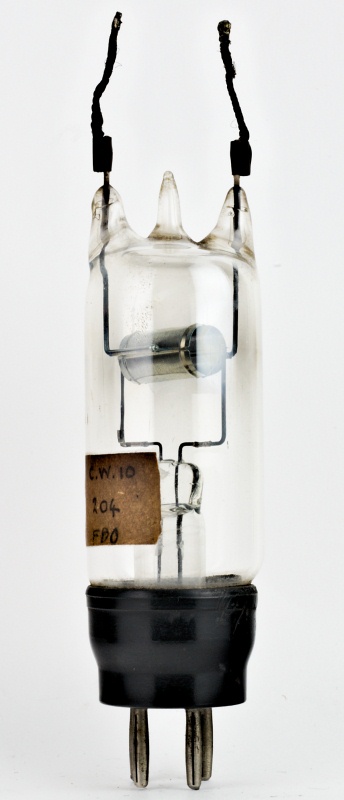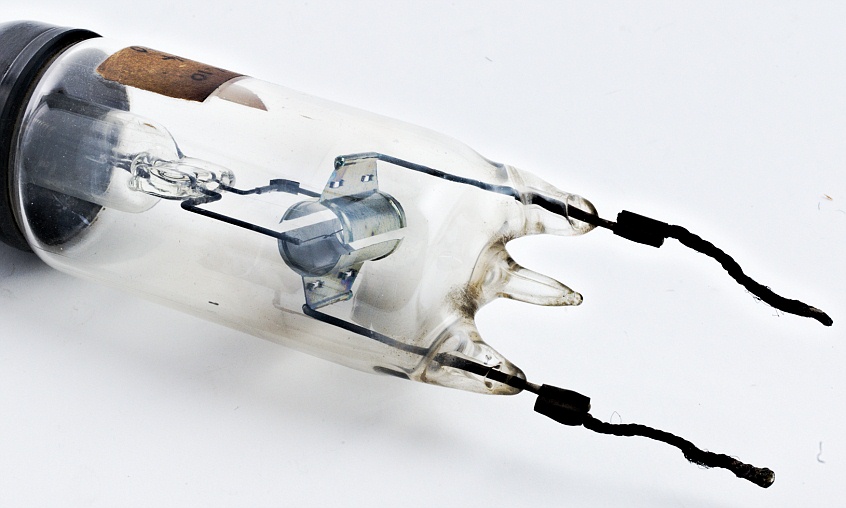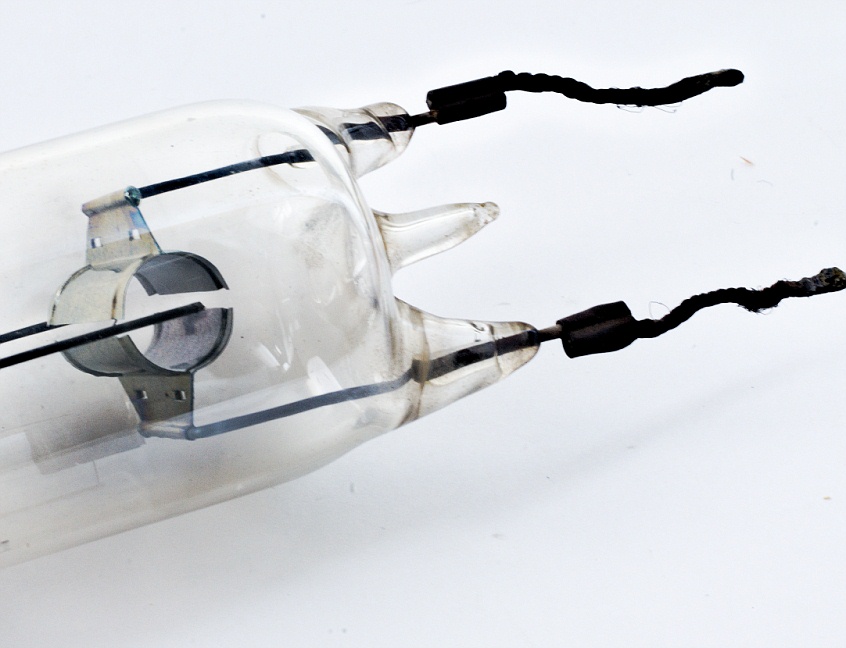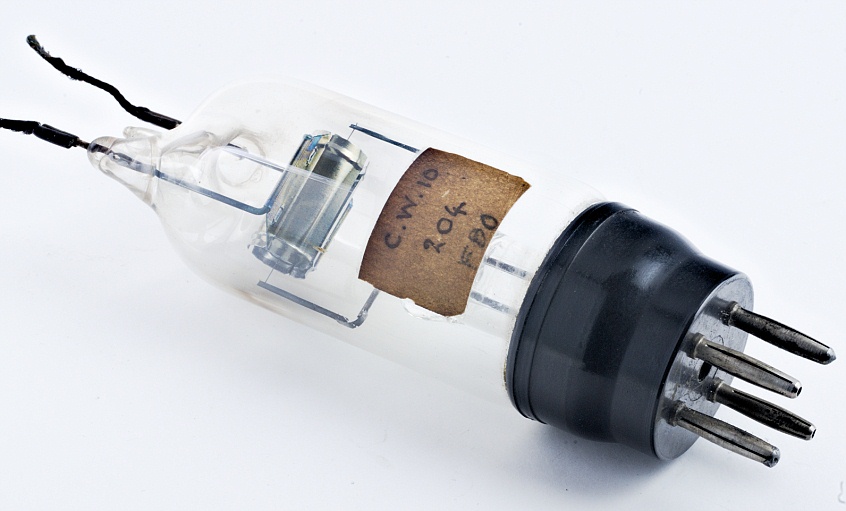C.W.10 Early Split-Anode Magnetron
Magnétron à anode fendue
Split-Anoden-Magnetron
A split-anode magnetron consists of an emitting cathode contained within an anode divided into two equal segments separated by narrow gaps, each segment being carefully insulated from the other. The tube operates in a magnetic field with the electrode axis approximately parallel to the lines of force. When under the influence of this field. the electrons in their passage to the positive anode experience the deflecting force and, at a certain critical value of anode voltage and field strength, they will cease to reach the anode. This principle is applied in the magnetron to impart a range of negative resistance to the tube similar in form to the dynatron characteristic arising from secondary emission in a tetrode. If a tuned circuit is connected between the anode segments and the high tension supply, oscillations can be produced and maintained at exceedingly high frequency.
The CW10 was developed by E.C.S. Megaw at the GEC Research Laboratories around 1935.
It could operate up to about 1400 MHz. Output power ranges from 10 W at 1.2 m to 30 W at 3 m.
• 50 W max power dissipation.
• 1.000 V anode voltage.
Used among the others by Alfred Gollin in experimental FM continuous-wave radar transmitter around 1937 and by Lowell in 1940 to perfect microwave antenna scanners.

Hauteur • Height • Höhe : 124 mm • 4" 7/8
Diamètre • Diameter • Durchmesser : 34 mm • 1" 3/8



Le contenu de ce site est sous copyleft  The content of this site is under copyleft
The content of this site is under copyleft  Der Inhalt dieser Website steht unter Copyleft
Der Inhalt dieser Website steht unter Copyleft
